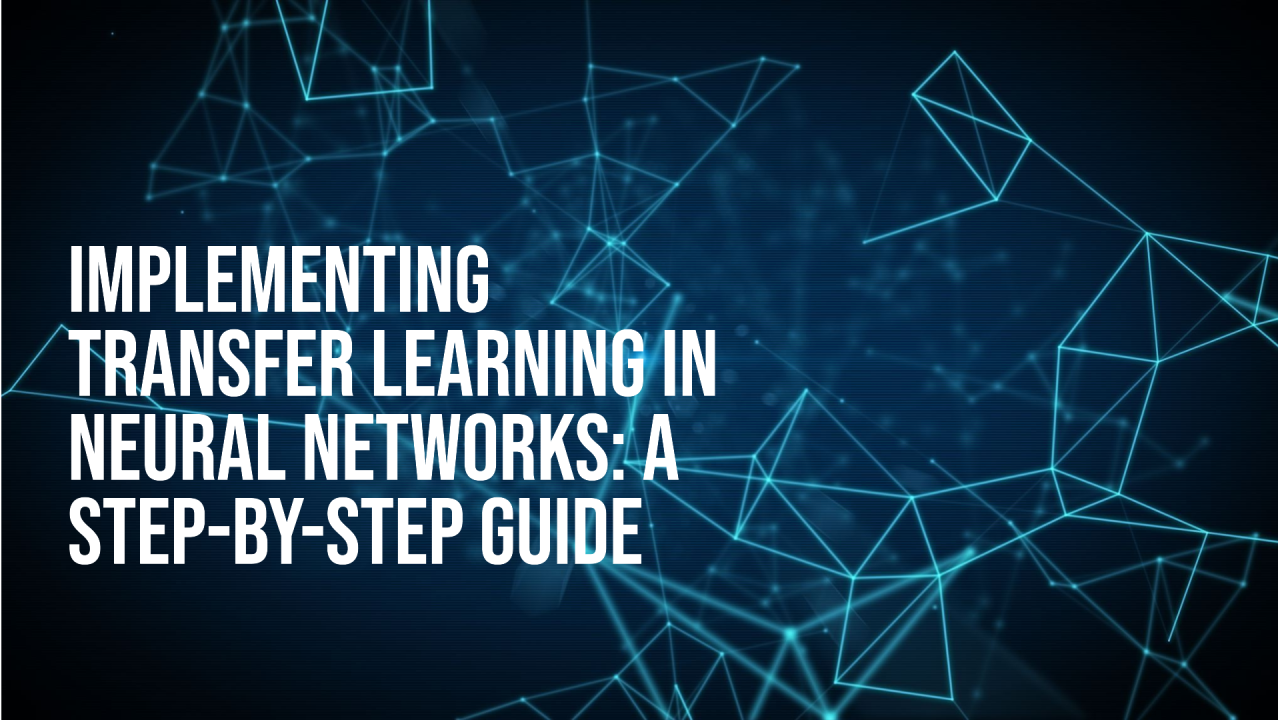
Implementing Transfer Learning in Neural Networks: A Step-by-Step Guide
Ketan Raval
Chief Technology Officer (CTO) Teleview Electronics | Expert in Software & Systems Design & RPA | Business Intelligence | AI | Reverse Engineering | IOT | Ex. S.P.P.W.D Trainer
Implementing Transfer Learning in Neural Networks: A Step-by-Step Guide
Learn about transfer learning, a powerful machine learning technique that reuses a model developed for one task as the starting point for another.
This article guides you through setting up the environment, loading a pre-trained model such as VGG16, freezing its layers, building a new model, and training it.
Understand how to leverage pre-trained models to improve performance and efficiency in your own machine learning projects with comprehensive code examples.
Introduction to Transfer Learning
Transfer learning is a powerful technique in machine learning where a model developed for a particular task is reused as the starting point for a model on a second task.
This approach leverages the knowledge gained from a pre-trained model to improve the performance and efficiency of a new model.
In this article, we will explore how to transfer knowledge from a pre-trained artificial neural network to a new network using the transfer learning strategy, complete with code examples.
Setting Up the Environment
Before we dive into the code, it's essential to set up the development environment.
Make sure you have Python installed along with necessary libraries like TensorFlow and Keras. You can install these libraries using pip:
pip install tensorflow keras
Loading the Pre-trained Model
The first step in transfer learning is to load a pre-trained model.
Popular models like VGG16, ResNet, and InceptionV3 are commonly used. Here’s an example of how to load the VGG16 model using Keras:
from tensorflow.keras.applications import VGG16# Load the VGG16 model pre-trained on ImageNet datasetpretrained_model = VGG16(weights='imagenet', include_top=False, input_shape=(224, 224, 3))
In this code, weights='imagenet' specifies that the model should be pre-trained on the ImageNet dataset, and include_top=False ensures that the fully connected layer at the top of the network is not loaded.
Freezing the Layers
Next, we freeze the layers of the pre-trained model to prevent their weights from being updated during training.
领英推荐
This step is crucial to retain the knowledge captured by the pre-trained model. Here’s how you can do it:
for layer in pretrained_model.layers: layer.trainable = False
Building the New Model
After freezing the layers, we can add new layers to create our new model.
Typically, this involves adding a few dense layers and an output layer that matches our specific task. Here’s an example:
from tensorflow.keras.models import Sequentialfrom tensorflow.keras.layers import Dense, Flatten# Create a new modelnew_model = Sequential([ pretrained_model, Flatten(), Dense(256, activation='relu'), Dense(10, activation='softmax') # Assuming we have 10 output classes])
Compiling and Training the New Model
With the new model architecture in place, the next step is to compile and train the model. Ensure you use an appropriate loss function and optimizer.
Here’s an example of how to compile and train the new model:
new_model.compile(optimizer='adam', loss='categorical_crossentropy', metrics=['accuracy'])# Training the modelhistory = new_model.fit(train_data, train_labels, epochs=10, validation_data=(val_data, val_labels))
Conclusion
Transfer learning is an effective method to utilize pre-trained models for new tasks, reducing training time and often improving performance.
By following the steps outlined above, you can successfully transfer knowledge from a pre-trained neural network to a new network.
Make sure to experiment with different pre-trained models and fine-tuning techniques to achieve the best results for your specific use case.
===========================================================